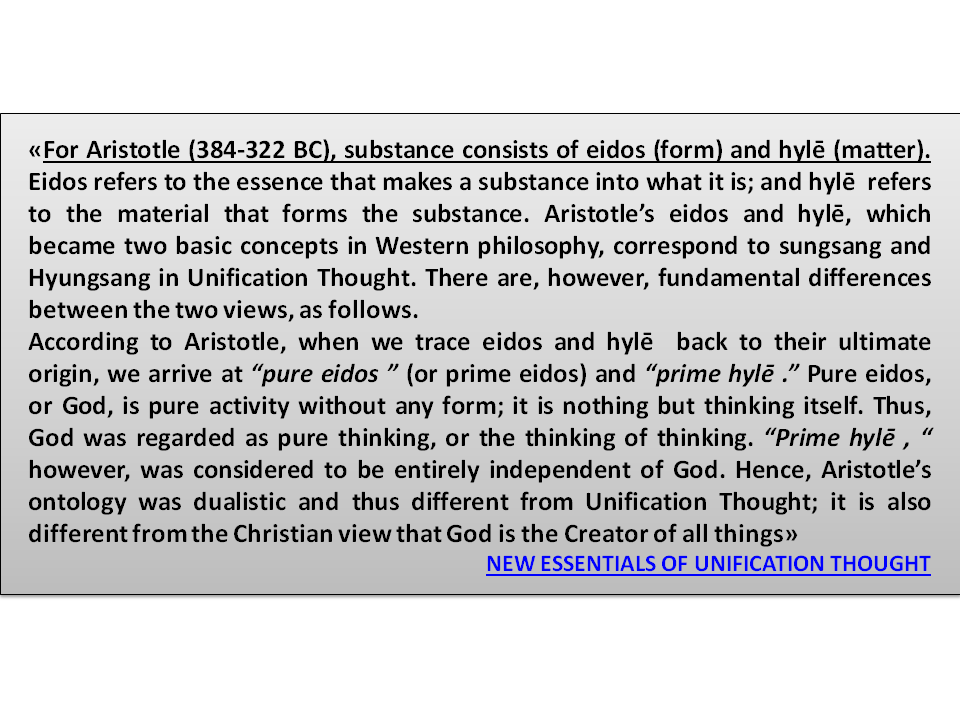For Aristotle, substance consists of eidos (form) and hylē (matter).
- Dr. Sun Myung Moon
- 23 февр. 2019 г.
- 1 мин. чтения

For Aristotle (384-322 BC), substance consists of eidos (form) and hylē (matter). Eidos refers to the essence that makes a substance into what it is; and hylē refers to the material that forms the substance. Aristotle’s eidos and hylē, which became two basic concepts in Western philosophy, correspond to sungsang and Hyungsang in Unification Thought. There are, however, fundamental differences between the two views, as follows. According to Aristotle, when we trace eidos and hylē back to their ultimate origin, we arrive at “pure eidos ” (or prime eidos) and “prime hylē .” Pure eidos, or God, is pure activity without any form; it is nothing but thinking itself. Thus, God was regarded as pure thinking, or the thinking of thinking. “Prime hylē , “ however, was considered to be entirely independent of God. Hence, Aristotle’s ontology was dualistic and thus different from Unification Thought; it is also different from the Christian view that God is the Creator of all things.





Комментарии